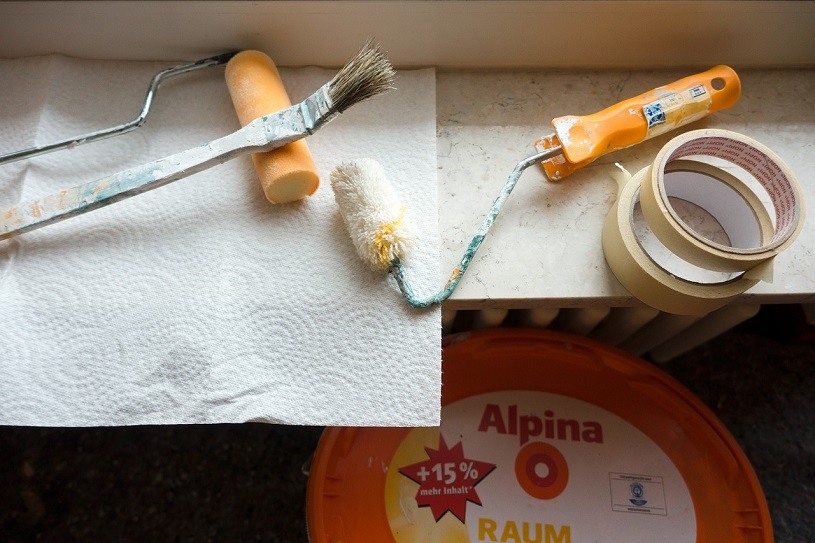How Long to Wait Between Coats of Paint?
-
Pete Ortiz
- Last updated:

When working on a home project, such as painting a room, there are a few simple rules to follow, one of which is making sure you let your paint dry between coats. If you don’t allow for adequate dry time, the texture will become uneven, there will be visible smudges, and it could cause the first layer to peel off.
To prevent these things from happening, there are things to consider and keep in mind as you finish one step and are ready to move to the next. This article will cover the basics of how to tell when the paint is dry, general dry times, and how you can speed up the drying process.
Is the Paint Dry Yet?
The type of paint will be a big factor when considering how long to wait between coats. Oil-based paints will need a minimum of six hours. However, it is recommended to wait 24 hours before you apply the second layer.
Latex paints dry much faster, sometimes as fast as an hour. But to be on the safe side, waiting at least four hours is more of a guarantee that there won’t be negative effects. There are factors to keep in mind that can affect your drying time, such as humidity, temperature, and ventilation.
- Humidity: If you live in a humid climate, wait 24 hours between coats. If you are painting in a basement that tends to have higher levels of humidity, a dehumidifier will help remove moisture to allow the paint to dry faster. Keep the windows closed to prevent the moisture-filled outside air from coming into the room.
- Temperature: If you live in a low-humidity area with high temperatures, the paint will dry much faster, sometimes allowing you to begin painting within an hour or two.
- Ventilation: Adding fans will speed up the drying process.
Speeding Up the Drying time
Besides adjusting the surrounding atmosphere (if that’s possible), there are a few techniques you can use when painting to kick the drying time into high gear. First, you can keep the initial coat as thin as possible. You may need to apply more than two coats, but your layers will come out more even and the colors will appear richer.
Using a roller allows you to apply thinner, evener layers. If you are more technologically advanced, you can use a spray gun. These apply very thin, even coats that tend to dry very fast.
Checking Dryness
You can tell your paint is dry by the way it looks and feels. Check multiple areas on the wall, especially in the corners, and see if the paint feels dry. There should be no tackiness to the paint, so if there is, then it is not ready for the next coat.
Look at the color of the wall: If the color is even with no darker tones or shiny areas, then it is most likely dry. By combining these two methods, you will be able to tell when you can move forward with your project.
Exterior Paint
Since exterior paints are made to withstand the outside elements and are more durable, you will need to plan ahead for the best day to paint outside. A sunny day with at least two hours of full sun on the paint is ideal. If it is cloudy, the drying process will naturally take longer. If it happens to rain, you will need a full six hours of sun to get the paint to dry after it becomes wet.
Conclusion
There are many factors to consider when figuring out how long to wait between coats of paint. With planning, you can get good results that will allow you to paint sooner rather than later. By using latex paint and keeping your layers thin, you could be applying your second coat within two to four hours.
Pick nice sunny days to paint outside, which will increase the likelihood of getting that second coat on within the same day. If in doubt, wait a full day to paint again. It’s better to make sure it is completely dry rather than ruining all the hard work you already put in.
See Also:
- 24 Must-Have Painting Tools (with Pictures)
- How Much Does It Cost to Replace Windows? What You Need To Know!
Featured image credit: stux, Pixabay
Contents


